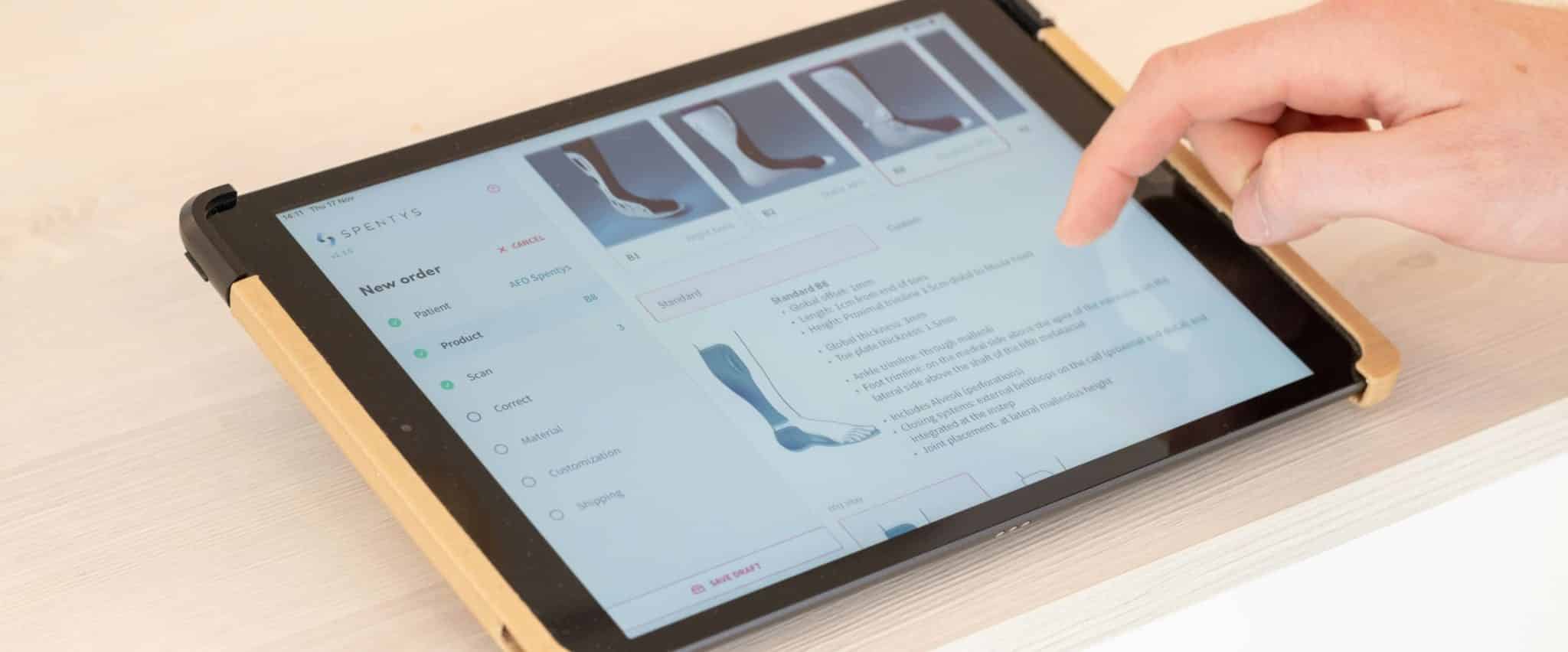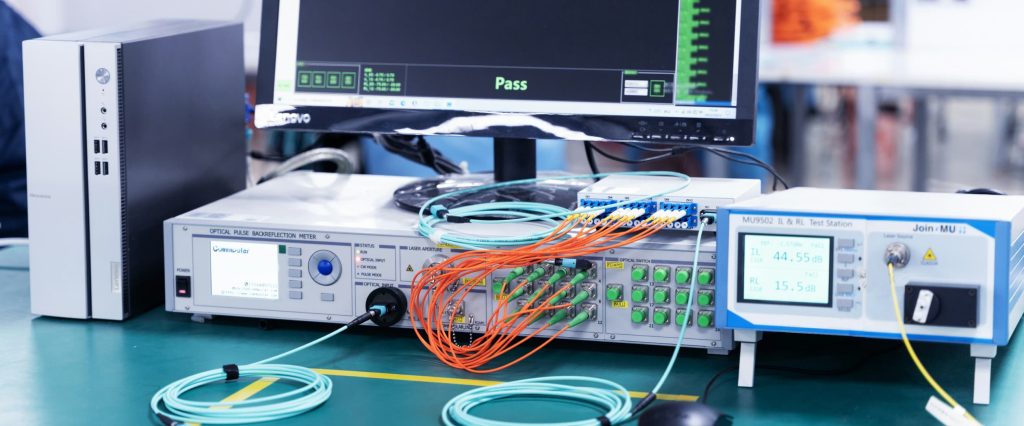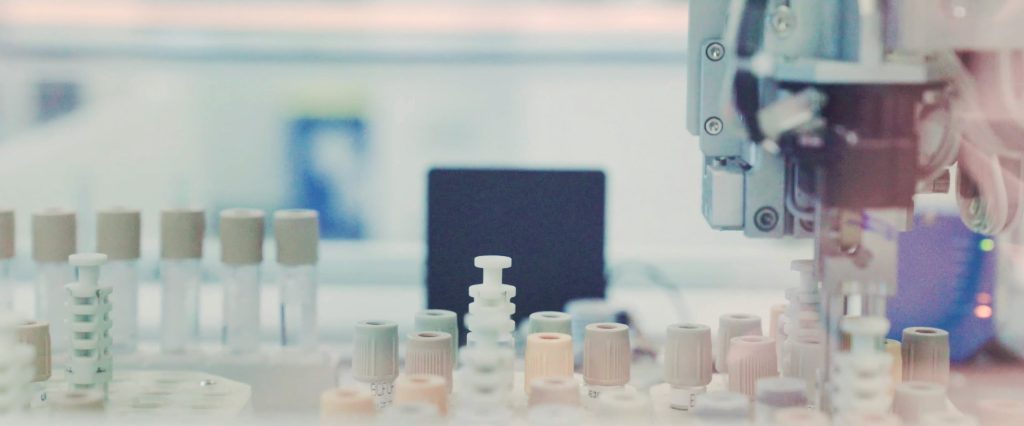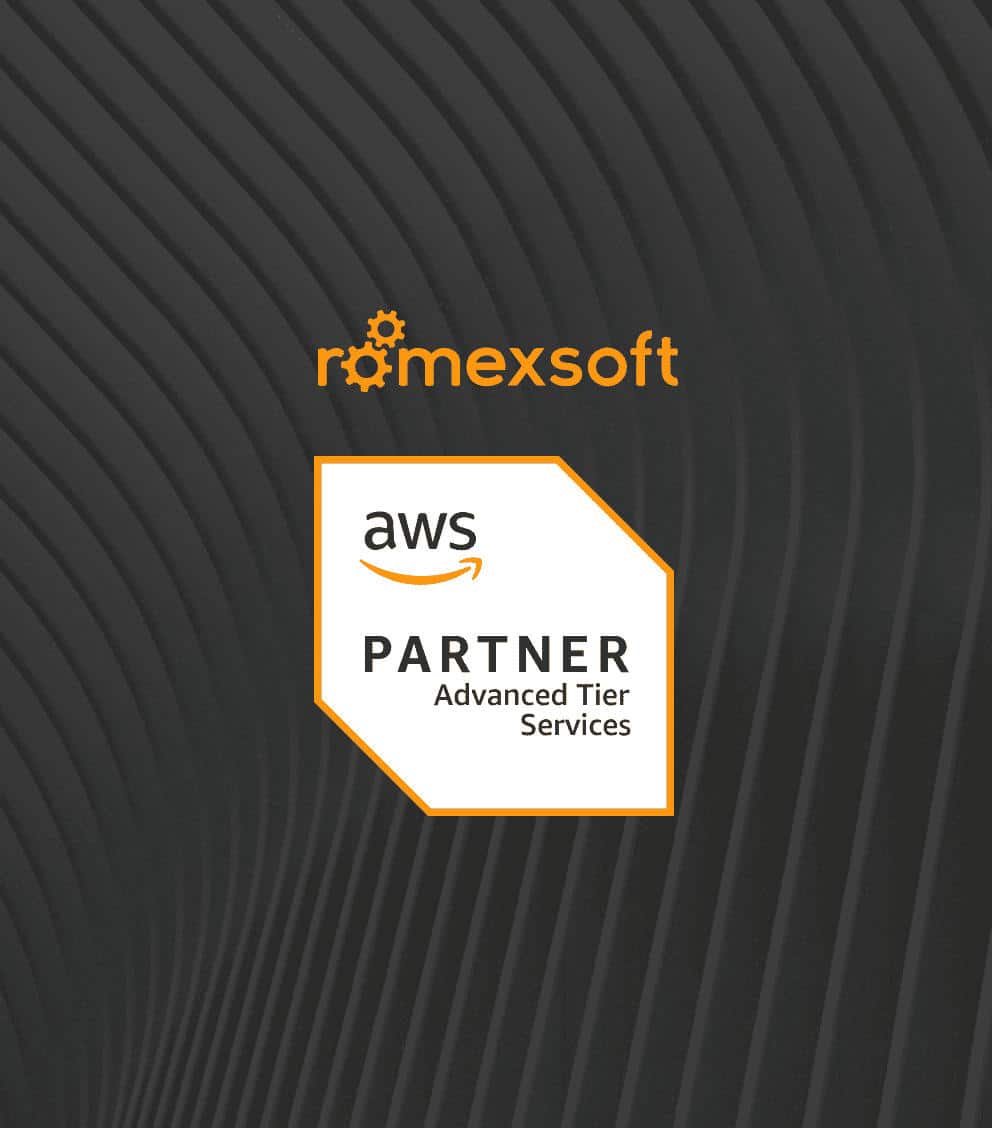Software as a Medical Device: From Concepts to Clinical Impact
The role that software plays in the medical sphere is becoming all the more central. This article dives into Software as a Medical Device (SaMD), explaining how these unique software solutions are managed within existing regulations in the industry. We will explore the current US regulatory landscape and highlight ongoing efforts to balance innovation with the safety of care recipients.
The blog discusses:
- definition of SaMD
- difference between SaMD and SiMD
- regulations in US and EU
- types of SaMD
- software development process
- future trends

Table of Contents
Emergence and wide access to powerful digital tools fuel a transformation in modern medicine, while central to this shift is Software as a Medical Device (SaMD) – intelligent software that functions as a medical device and offers unique possibilities for diagnostics and treatment. This article looks into the nature of SaMD and how it is managed within existing medical device regulations. Also, we will explore how these frameworks are being adapted and refined, which ensures that they encourage innovation, guarantee the safety of care, and product effectiveness.
Table of Contents
What is Software As a Medical Device
Software as a Medical Device (SaMD) is defined as software designed for one or multiple medical purposes and capable of performing its functions on general-purpose computing platforms without the need to be a part of a specific built-for-medical-devices hardware setup.
What SaMD represents, according to FDA documentation, which cites the International Medical Device Regulators Forum (IMDRF), is software designed for one or more medical purposes that works without being part of a physical medical device. The FDA also mentions that SaMD, often known by other names like standalone software, medical device software, or health software, is gaining traction in various environments, be it medical device platforms, commercial off-the-shelf platforms, or virtual networks.
Because medical software is in constant evolution and the industry regulations are to be unshaken, it’s a must to figure out if a piece of software can be defined as SaMD or not. If it qualifies as a medical device, then strict rules must be applied to how it is designed, developed, and maintained for client security. These crucial distinctions are what help stakeholders define how to properly test the software, manage its updates, and identify and control any potential risks, all to ensure client safety.
| Characteristic | SaMD | Not SaMD |
|---|---|---|
| Software Autonomy | Independent, cross-platform functionality with agile update capabilities and deployment | Hardware dependence leads to restricted update flexibility and scalability |
| Regulatory Burden | A mandatory independent regulatory oversight of the software component, ensuring compliance and quality | Review as part of a complete device system, which may dilute focus on software-specific risks |
| Platform Flexibility | Compatibility with multiple platforms (e.g., smartphones, PCs), enhanced innovation, and cost efficiency | Functionality limited to a particular device, which typically demands dedicated support |
| Development and Maintenance | Simpler, modular update cycles that enable faster iterations and incorporation of groundbreaking clinical insights | Mandatory hardware-software re-validation that comes with every modification and may hinder timely improvements |
| Risk Management | Software-specific risk analysis and mitigation for simplified overall safety assurance | Integrated risk and hardware performance assessment that leads to increased complexity |
Why Is SaMD Important in Healthcare
With its innovative, evidence-driven approach, SaMD significantly transforms health services in various aspects, from clinical outcomes to personalized medicine. The numerous benefits of this software could be outlined as follows.
- Enhanced Clinical Outcomes
By using this type of software, one can perform continuous and remote monitoring that helps detect health anomalies early on and enables prompt clinical intervention. Advanced tools like real-time data analytics and predictive algorithms lead to more accurate diagnoses and effective treatment planning. The objective is to simplify the working process, prevent medical emergencies, towards better long-term health outcomes. - Increased Medical Care Accessibility
SaMD functions on general-purpose devices, such as smartphones and personal computers, which broadens the reach of high-quality health services beyond traditional clinical settings. This software helps extend telemedicine and virtual consultations to service recipients in remote, rural, or underserved areas, thereby making medical care reachable to people who are limited in their access due to distance, resource limitations, or mobility issues. - Personalized Medicine
SaMD makes individualized care plans a possibility. It does so by collecting and analyzing large volumes of patient-specific data, such as vital signs and lifestyle information, while also being able to update and adapt to new information quickly. This flexibility allows clinicians to modify treatment plans for each service recipient, which creates a customized approach that aids in managing chronic conditions more efficiently and maximizes the impact of personalized and precision medicine. All with a view to improving the overall effectiveness of treatment.
What Is the Difference: SaMD vs SiMD
SaMD, as software that performs one or multiple medical functions with no required attachment to a specific medical device, can run on common hardware like smartphones, tablets, or computers. This category of software is independent of any physical device, which offers significant flexibility: it can be updated more rapidly to address new clinical evidence or improvements in technology. An area where SaDM proves indispensable is telemedicine and remote client monitoring.
As SaMD is regarded as a distinct kind of software, and therefore, regulatory bodies evaluate it based on its specific characteristics, with a strong focus on its risk management, cybersecurity, and usability.
For a clear understanding of Software as a Medical Device, consider the given examples:
- Diagnostic Imaging Software allows clinicians to view and analyze MRI or X-ray images on general-purpose devices (like smartphones) for diagnostic purposes.
- Computer-Aided Detection (CAD) software analyzes medical images to identify tumors or breast cancer.
- Treatment Planning Software collects personal information to help create personalized treatment plans (e.g, linear accelerator cancer therapy) and calculate drug dosages based on individual data.
- Data Analysis and Visualization Tools collect information from multiple sources (e.g., X-rays, scans) and create 3D models that clinicians use for diagnosis or treatment planning.
SiMD, on the other hand, refers to software in a medical device, where the software is an integral part of specific medical equipment. Unlike SaMD, this software and its performance are inherently connected to the specific hardware of the device it runs on, its functions, and features. Based on this, the regulatory review for SiMD, as well as its safety and efficacy, is usually performed as part of the complete medical hardware device system. A strong emphasis is often placed on how both the software and the hardware work together safely to deliver the intended medical function. In terms of usage, SiMD is common in devices where the embedded software manages such aspects as the control system, imaging, and diagnostic functions.
These key examples show how important software is to how a medical device works and functions:
- Infusion Pump Software сontrols the motor and manages the delivery of fluids (e.g, medications or nutrients) to service recipients.
- Pacemaker Software oversees and adjusts heart rhythms by controlling the electrical impulses a pacemaker delivers.
- Insulin Pump Software precisely manages insulin delivery for diabetes, continually adjusting dosages based on real-time glucose sensor readings.
- Pulse Oximeter Software analyzes data from its sensors to measure and display your blood oxygen levels and pulse rate directly on the device.
How is SaMD Regulated in Different Countries
As SaMD continues to integrate into daily healthcare practices, its regulatory nuances may raise concerns. This is especially true as different nations and regions across the globe have developed and continue to refine their distinct regulatory frameworks to guarantee that these innovative digital tools are both efficient and safe for service recipients.
SaMD regulations by the FDA in the United States
There are three defined risk levels into which software is classified:
- Class I: Low-risk devices that must follow general FDA controls and usually do not require premarket approval.
- Class II: Moderate-risk devices that demand general and special controls. They are usually approved through the 510(k) pathway, if they are similar to an existing device, or through the De Novo pathway, if a similar device hasn’t been registered.
- Class III: High-risk devices that support or sustain life and demand rigorous premarket approval (PMA), which can often involve clinical trials.
Approval Pathways
Approval pathways are regulatory mechanisms used by the FDA to evaluate and approve medical devices, particularly Software as Medical Device, before allowing them to enter the market. They verify that devices align with established standards for safety, performance, and effectiveness. There are several specific pathways, namely:
- Permanent Notifications 510(k)
Applied to Class I and Class II devices, this pathway helps demonstrate that these medical devices are nearly identical to an existing, legally marketed predicate device. Compared to PMA, this pathway is streamlined, and it allows developers to launch their products with more efficiency while proving comparable safety and effectiveness. - De Novo
This pathway is for novel Class II devices that have no existing predicate. Developers must provide evidence of the safety and efficiency of their creation in order to establish a new device type. What this pathway is most useful for is innovative products that bring forth new technology or methodologies. - Premarket Approval (PMA)
For high-risk, Class III devices, there is PMA – a pathway that demands a comprehensive submission of clinical trial information and scientific evidence that clearly illustrate the safety and efficacy of the device. This process is the most rigorous given the high potential risk of Class III devices to clients.
Risk-Based Oversight
The FDA focuses on software that can potentially harm the safety of the service recipient in case of failure. There are cases when low-risk software falls under enforcement discretion, which essentially means that the FDA does not actively enforce all regulations because of the minimal risk level of the device, although developers are still expected to comply with medical device regulations.
Guidance for SaMD Developers
Developers are advised to engage in the regulatory process from the early stages of development in order to determine risks, assess if the premarket application is necessary, and ensure that development strategies align with regulatory expectations. When developing a medical device, medical software companies are expected to follow international quality guidelines defined by IMDRF and use specific standards (like IEC 62304) to manage the software lifecycle and ensure reliable performance, clinical evaluation, and safety.
Special Considerations for AI/ML-Enabled SaMD
The increasing popularity of Artificial Intelligence (AI) and Machine Learning (ML) in SaMD has prompted the FDA to issue additional guidance, which involves rules for “Good Machine Learning Practice” and specific frameworks to regulate modifications in AI/ML-driven software. These measures exist to manage the adaptive nature of these technologies and maintain safety, transparency, and effectiveness across all stages of the product’s lifecycle.
SaMD regulations by the EU MDR in Europe
When it comes to Europe, SaMD is administered by the EU Medical Device Regulation (MDR) 2017/745, the current regulation that came into force in May 2021, replacing the Medical Device Directive (MDD). According to the MDR, this type of software is intended for medical purposes, both as a standalone product and as a component integrated into hardware devices. The strict standards imposed by the MDR ensure that software complies with high safety and performance standards before being launched.
Classification and Risk-Based Approach
In line with MDR standards, medical device software is categorized by its risk level, as outlined in Rule 11. There are four main categories of risk (Class I, IIa, IIb, or III) that are based on the purpose and potential harm to service recipients of the SaMD. Those are particularly:
- Class I: Typically involves low-risk software. SaMD rarely falls into this category, as most applications warrant higher risk classes.
- Class IIa: In this risk class, you’ll frequently find software that supports diagnostic or therapeutic decisions, including AI tools for image analysis.
- Class IIb: Devices in this risk class usually involve software where malfunctions might cause serious health decline, like applications monitoring vital signs in critical care.
- Class III: The highest-risk applications, such as cancer treatment planning algorithms, fall into this class due to their potential to directly impact life-threatening decisions if errors occur.
Since software is strictly categorized by its risk level, most of it, especially that falls under categories from Class IIa to III, requires involvement from a Notified Body to be fully reviewed and approved before launch.
General Safety and Performance Requirements (GSPR)
SaMD is required to meet the General Safety and Performance Requirements specified in Annex I of the MDR, including the following:
- Data Integrity: This requirement ensures that the data processed by the SaMD is consistently accurate, reliable, and precise, preventing errors that could impact clinical care.
- Cybersecurity: This category of software must incorporate robust protection measures designed to safeguard personal information and system functionality against unauthorized access, breaches, and other evolving cyber threats.
- Risk Management: Manufacturers are expected to implement a comprehensive and continuous approach to identifying, effectively mitigating, and proactively managing all potential risks associated with the SaMD throughout its entire product lifecycle.
- Clinical Evaluation: This critical aspect involves demonstrating the SaMD’s safety and effectiveness through rigorous clinical evidence and comprehensive performance data to ensure that it delivers its intended medical benefit.
- Notified Body Review: A Notified Body assesses various elements, such as technical files, clinical information, and the overall quality management system.
- CE Marking: A product that has met EU safety and performance standards is granted the CE mark after its conformity has been established.
- Vigilance Systems: This involves setting up robust mechanisms for reporting adverse events and continuously monitoring product performance once the SaMD is in use.
- Unique Device Identification (UDI): Implementing a UDI system ensures that every individual software can be precisely traced throughout its distribution and use. This traceability is critical for enabling swift and coordinated market withdrawals or corrective actions if any issues arise.
- Legacy Devices and Transition: Software products originally approved under the older Medical Device Directive (MDD) must adapt to stricter MDR transition rules. This often limits manufacturers’ ability to make modifications and complicates essential updates.
- AI/ML-Driven SaMD: These products face additional requirements specifically addressing algorithmic transparency, robust validation of their performance, and crucial continuous performance monitoring throughout their operational life.
- Comparison with the FDA: Unlike the FDA’s emphasis on defined risk-based pathways (such as 510(k), De Novo, or PMA), the EU MDR mandates a broader conformity assessment that requires direct involvement from Notified Bodies. This reflects the MDR’s more stringent pre-market evaluation process.
- For Disease Detection
Diagnostic software is designed to analyze diagnostic information, which may involve imaging, laboratory test results, or other clinical information, to detect diseases at early stages. This software usually utilizes advanced tools, such as artificial intelligence (AI), to identify subtle patterns or anomalies that may be a sign of pathology.To illustrate, imaging analysis tools can assess mammograms or CT scans for early signs of cancer, and pathology applications can evaluate biopsy samples for initial indicators of changes in malignant tissue. By reducing the risks of human errors and supplementing the medical perspective, these tools deliver early symptom detection and enhanced diagnostic accuracy. Moreover, these advances are highly versatile, as they expand the reach of healthcare to various environments, from hospitals to remote clinics.
- For Risk Assessment
Another advanced technology, a risk assessment app, is able to assess an individual’s likelihood of developing certain conditions based on a range of specific parameters like genetic markers, lifestyle factors, and historical health information.A great example is how cardiovascular risk tools gather and store data from an individual’s blood pressure readings, cholesterol levels, and family history to forecast the risk of such health conditions as heart attack or stroke. Another example is how predictive algorithms flag individuals with chronic diseases (like diabetes) who are at high risk for complications. These advanced tools fulfill a great number of functions: they identify high-risk profiles early, guide resource allocation and targeted intervention, and engage users in proactive health management, all to improve clinical outcomes and help facilitate personalized preventive strategies.
- For Chronic Condition Management
These applications are engineered for continuous supervision: they constantly collect and analyze data to regulate long-term conditions such as diabetes, hypertension, asthma, etc. The software integrates information gathered from wearables or home-monitoring devices and delivers a dynamic view of an individual’s condition.A diabetes management app, for example, tracks blood glucose levels and adjusts insulin dosing in real time accordingly, which showcases how constant supervision can lead to better disease control. What this method achieves is the delivery of early interventions, enhanced self-management, and minimized the chances of complications that can result in hospitalization.
- For Vital Signs Monitoring
Another feature of this software is the real-time collection of key physiological parameters (e.g, heart rate, blood pressure, oxygen saturation, and temperature) to promptly recognize any deviations from normal ranges. In critical care, applications integrated with wearables or connected sensors continuously track vital signs and send prompt alerts to clinicians if thresholds are breached. As a result, this constant evidence-powered monitoring triggers immediate clinical responses, a feature of critical importance to the safety of care and precise, informed decision-making, especially under rapidly changing conditions. - For Disease Treatment
Therapeutic software specializes in delivering precise treatment interventions and can operate either by directly controlling medical devices or by guiding clinical decision-making through digital therapeutics.This type of software is often used in radiation therapy, as it helps oncologists design treatment plans with optimal dose distribution and minimum harm to healthy tissue. In the aspect of mental health, digital therapeutics are used to deliver cognitive behavioral therapy (CBT) for addressing various mental health conditions. Ultimately, this method of treatment significantly enhances precision by enabling interventions tailored specifically to each individual’s profile, leads to more efficient therapy plans, and ensures the continuous development and adaptability of treatment protocols.
- For Rehabilitation Support
Rehabilitation software is a key factor in patient recovery by guiding therapeutic exercises and tracking progress. These tools come in many forms: from mobile apps offering structured physical therapy programs to virtual reality (VR) systems that create engaging, simulated environments for motor function recovery after a stroke.A key feature of this software is its interactive guidance and real-time feedback, which help adjust therapy plans based on each patient’s progress and needs. This approach leads to numerous benefits, such as improved user engagement, faster recovery rates, more consistent adherence to rehabilitation protocols, and, consequently, better overall quality of care.
- Regulatory Expertise and Track Record
It is highly important to confirm that your partner has sufficient knowledge of regulatory frameworks (FDA, EU MDR, etc.) and has a history of successful launches of similar products. Consider requesting case studies or client references to verify their ability to handle regulatory pathways clearance and compliance. - Quality Management and Process Rigor
You must ensure that your partner uses robust quality management systems (e.g., ISO 13485) and adheres to standards like IEC 62304. Their process of product development must include detailed risk management, verification, and validation protocols that ensure client safety and product integrity front and center. - User-Friendly Design
A reliable partner emphasizes user experience and client engagement. Their track record should include such practices as creating intuitive interfaces, effective usability testing, and design practices that focus on the end-user. A key trait of a successful SaMD is not only compliance with clinical standards but also the delivery of a high-quality experience to both service recipients and clinicians. - Collaborative Approach with Transparent Communication
When selecting a partner, prioritize one who actively embraces an agile development approach, drives ongoing improvements, and demonstrates transparent communication. A collaborative approach can be vital for the success of your software. This means your partner should show commitment through consistent communication, actively tackling issues together, and readily adapting to changing needs.
Conformity Assessment and CE Marking
Organizations are required to compile exhaustive records about their devices and implement a quality management system that is often based on the ISO 13485 standard. Higher-risk SaMD (Classes IIa-III) must undergo conformity assessment, including:
Post-Market Surveillance (PMS) and UDI Requirements
Once the product reaches the market, it must undergo continuous post-market surveillance, a process that involves two main components, which are:
Special Considerations and Challenges
IMDRF Alignment
The EU’s medical device rules (MDR) aim to match global standards such as those set by IMDRF, and specific EU guides (e.g., MDCG 2019-11) help align IMDRF’s risk categories with EU classifications (for instance, IMDRF Category II corresponds with EU Class IIa, and Category III with Class IIb). That said, there are some disparities in the classification systems. For instance, the UK’s MHRA adopting IMDRF guidelines more directly might result in different classifications than those used by the EU.
3 Main Types of SaMD
Software as a Medical Device (SaMD) covers a range of applications that serve various medical purposes. In this section, we will explore the main types of this software category based on their primary functions in healthcare to better understand this diverse landscape.
Diagnostic Software
Monitoring Software
Therapeutic Software
Software Development Process for SaMD
Developing Software as a Medical Device isn’t like building just any app. Because it directly impacts patient health, the process demands extra care and precision. In this section, we will guide you through the process of creating medical software that’s not only innovative but also safe and reliable.
Concept and Requirements Gathering
The first step of the development process is to define the purpose of the software and the specific user needs it is intended to meet. This involves identifying specific medical issues you want to solve and the specific ways your software will address them to achieve improved clinical outcomes and aid clinicians in their working process.
A thorough analysis of the target market of your application is a must, as well as consulting key stakeholders, particularly clinicians, service recipients, and industry experts, to further develop the product’s core idea. Their insights will guarantee that the detailed plans for the software are clear, testable, and address the practical needs of the medical care sector.
At the initial phase, your development team must assess the existing regulatory requirements (e.g, FDA guidelines or EU MDR) and applicable standards like IEC 62304 for the software lifecycle and ISO 14971 for risk management – this step will ensure that guidelines are identified from the very beginning. Such a thorough examination helps define the scope of your project and ensure continuous compliance with relevant standards.
Planning and Risk Management
The next stage of the product development is the creation of a detailed project plan, which involves such elements as timelines, resources, milestones, and deliverables. Engineering this plan helps you map out the entire development process and coordinate the efforts of all team members according to the plan.
Usually, a comprehensive plan of risk management is designed in compliance with ISO 14971. This plan plays an important role in ensuring the safety of care, as it outlines potential hazards, evaluates the associated risks, and establishes mechanisms that help manage these risks across all stages of the product’s lifecycle.
Another fundamental principle of regulatory compliance is the Quality Management System (QMS) – a framework that is devised to simplify operational processes, maintain adherence to quality standards (such as ISO 13485), and ensure seamless internal evaluations and regulatory audits.
Design and Development
Once the project plan is finalized, the process moves into the design stage. This phase involves the development of the software’s system architecture with a strong emphasis on features necessitated by how SaMD is often deployed on general-purpose devices. Modularity, robust cybersecurity measures, data integrity, and interoperability are needed for the app to function on smartphones or PCs.
Next on the plan, the SDLC developed by your team must align with IEC 62304 guidelines, which involve such requirements as rigorous documentation, regular design reviews, coding standard enforcement, and stringent configuration management. The role of this methodology in the design stage is to ensure that each part of the development process is managed under diligent oversight.
It is also important to ensure that your software contains built-in risk controls from the initial point of design. By doing so, you enable your application to effectively identify threats, meet compliance standards, and deliver safe clinical performance.
Verification and Validation
The purpose of this stage of the development process is to assess and confirm that your software operates according to its intended design specifications and fulfills clinical needs. To verify that the software meets all the defined requirements and each component operates in line with standards, consider performing various tests, particularly unit tests, integration tests, and system tests.
The validation process includes clinical evaluations, pilot studies, or simulated environments to estimate the usability and effectiveness of your software. The purpose of this step is to confirm that the software performs its intended function in actual clinical practice.
Every test result and outcome from the validation process is meticulously recorded and later submitted during audits and regulatory checks to demonstrate the software’s compliance with established standards.
Regulatory Submission
What comes after the development and validation is the preparation for the regulatory submission. Usually, it consists of a detailed technical documentation package that includes such information as the design history file, risk management reports, conducted tests, validation data, and clinical evaluation records.
The classification of the device is what dictates the appropriate regulatory submission pathway, which could be a 510(k), De Novo, or PMA if you’re aiming for the U.S. market, or, for the European region, an EU MDR conformity assessment.
Crucial to this phase is establishing and maintaining an open line of communication with regulatory authorities on account of your progress. In case of feedback or inquiries from the regulators, your team must be prepared to conduct additional tests or update records.
Deployment and Post-Market Activities
Once you receive regulatory approval, the software is released into the market. However, to be successfully integrated and deployed in the clinical environment, your software must be equipped with detailed change management procedures and clear installation guidelines.
Shortly after deployment, developers must integrate post-market surveillance (PMS) systems into the product for constant supervision of the software’s performance in actual clinical environments. These systems gather relevant data, monitor negative outcomes, and improve software according to feedback.
To ensure that the software remains relevant and effective, the development team engineers a maintenance plan that covers ongoing software updates, periodic security checks, and performance monitoring. By adhering to this plan, you make sure that your product is constantly optimized in terms of safety of care, efficiency, and compliance with standards.
The field of Software as a Medical Device (SaMD) is experiencing rapid changes that are continually reshaping medical care practices. These ongoing developments are significantly influencing how medical care is provided to patients worldwide. In this section, we will explore the main trends that are currently shaping the future of SaMD.
What Are the Future Trends in SaMD
From AI that detects illnesses before symptoms appear to tools that bring expert care directly to your screen, this section will explore the transformations that SaMD can introduce to healthcare.
AI Predictive Analytics for Early Intervention
Leveraging artificial intelligence and machine learning to power predictive analytics will remain a prevailing trend in the SaMD aspect. By processing large datasets that involve EHR data, sensor outputs, and even genomic information, these advanced tools detect patterns and help clinicians to forecast disease progression, treatment outcomes, and patient risk factors.
Predictive tools analyze large volumes of personal information. This enables medical professionals to intervene before health issues escalate and curate care plans tailored to each medical care recipient. These algorithms can predict if a patient is in danger of such conditions as heart failure or diabetes complications, which allows clinicians to adjust treatment plans.
By combining genomics with relevant personal information from various sources and applying complex computational models, the power of predictive analytics can be further enhanced. This advancement allows clinicians to forecast health changes with greater precision and create even more personalized treatment plans for each individual.
Real-Time Clinical Decision Support
The next trend is the integration of Clinical Decision Support Systems (CDSS) within SaMD. These systems combine patient-specific information with up-to-date medical research and provide clinicians with real-time, evidence-powered guidance and relevant insights that play a crucial role in clinical decision-making.
CDSSs become particularly effective in their ability to enhance diagnostic accuracy and simplify working processes. The use of these systems allows for receiving instant recommendations based on personal information, as well as avoiding errors and making more informed decisions.
Combined with artificial intelligence, CDSS will be able to deliver personalized recommendations based on individual client profiles, clinical evidence, and real-time data inputs.
Expanded Telehealth Care Capabilities
The implementation of SaMD within telehealth platforms is on the rise in light of global health crises. A major benefit of this integration is its ability to support remote consultations, monitoring, and treatment planning, which addresses the demand for more accessible, cost-effective care solutions.
Incorporating SaMD helps telehealth applications resolve one of their most pressing concerns – the limited reach and quality of care for underserved populations. Through this integration, service recipients are provided with thorough assessments and management of chronic conditions with no need for a visit to a clinic.
In the end, this trend contributes to increasing convenience and reduced costs of clinical services, as well as the digital transformation of medical care delivery.
Continuous Remote Monitoring for Disease Management
Through partnership with IoT devices and mobile apps, SaMD is revolutionizing remote client monitoring. This integration enables clinicians to continuously track vital signs and key health metrics, which aid in how chronic diseases and urgent medical issues are addressed outside traditional medical care environments.
Continuous data collection allows clinicians to monitor chronic conditions more efficiently and address emerging issues as they arise, with minimal hospital readmissions and improved clinical outcomes. Because of the constant evidence-tracking, any deviation from the individual’s baseline health data gets immediately reported and prompts timely intervention. Advanced analytics, which can be integrated into the monitoring systems, will unlock predictive capabilities for more proactive healthcare interventions.
Secure Virtual Consultations for Medical Care Accessibility
SaMD also matters for virtual consultations – it both ensures that remote interactions between clients and clinicians are secure and helps retain their efficiency when offline visits cannot be arranged.
What this trend achieves is increased client engagement and improved accessibility of personalized care, especially when it comes to rural or underserved areas. Online consultations eliminate logistical challenges that come with traditional office visits and ensure that medical care services can be reached quickly and without additional expenses.
In the future, the integration of AI-powered diagnostic tools into virtual consultation platforms is predicted to make remote health examination even more precise and efficient. It is highly likely that systems, by combining relevant information and advanced analytics, will achieve a more interactive user experience that is equal to an in-person assessment.
Patient-Centered Design Enhancing Usability and Engagement
When it comes to product design, the top priorities of SaMD development are usability, accessibility, and intuitive user experience. What facilitates this trend is the growing awareness of how the efficacy of digital health tools is based not only on technical performance but also on how user-friendly the interface is.
Personal features and interfaces that are easy to use for service recipients of all levels of digital literacy encourage users to actively participate in the treatment process, as well as minimize the risks of errors and enhance medical workflows. A relevant and user-oriented design of the software is the key to improving treatment adherence, user satisfaction, and overall health outcomes.
Because alignment with real-world user needs is as important as compliance with regulations, user-centered design is expected to be a major driving force of innovation in the SaMD aspect. In the future, software products are bound to address the challenges of modern clinical environments by offering even greater personalization and adaptability.
How to Choose a Partner for SaMD
Choosing the right partner for your SaMD project is a step that demands specialized expertise and a commitment to quality. A reliable healthcare development vendor, such as Romexsoft, can provide the relevant insights and comprehensive healthcare software development services essential for navigating this complex landscape. In this section, we will guide you through key considerations for making that choice.
Software as a Medical Device FAQ
The FDA acknowledges the role and impact of artificial intelligence. It has been confirmed that AI plays a huge role in all stages of drug product development in various therapeutic areas, and, as observed by CDER, has become a frequent component of drug applications submitted over the recent years. From non-clinical research to clinical trials and post-launch monitoring and manufacturing, AI demonstrates exceptional abilities to drive innovations at every phase of the drug product journey.
The challenges presented by the implementation of SaMD in medical care include regulatory, technical, and operational issues. Regulatory challenge, for example, lies in the fact that SaMD must meet strict standards from bodies like the FDA or the EU MDR. To achieve full compliance, your product must go through risk-based evaluations, validation processes, and documentation, all of which can hinder development and impact innovation.
Another struggle is to seamlessly implement the software within existing clinical workflows and health IT systems. In order for your software to deliver relevant, accurate insights without causing disruptions in daily operations, you must ensure that it is interoperable with a variety of environments, such as electronic health records, laboratory systems, and other platforms. Also, since insufficient usability can slow down innovation and reduce the efficiency of these technologies, it is important to develop a user-centered design for your software to be intuitive and align with clinicians' needs.
ISO 13485 establishes a stringent quality management system that SaMD must comply with. ISO 13485 manages every stage of product development: from design to post-market surveillance. It imposes rigorous risk management practices in line with ISO 14971, which includes proactive hazard identification and mitigation. This standard also establishes stringent design controls and validation processes, which verify that your software product is as reliable as it is intended to be. Operating under ISO 13485 requires thorough documentation to support regulatory audits throughout your product’s lifecycle. Lastly, the standard promotes continuous improvement, helping your software stay effective, safe, and compliant as user needs evolve.
The FDA has officially confirmed over 1,000 AI/ML-enabled medical devices, and considering how many devices gain approval, this number will continue to grow. These new devices approved by the FDA are listed in a public database, and it is evident that the adoption of AI/ML is growing more and more popular across various medical applications. Product developers are using artificial intelligence to advance their technology to meet clinical needs, which creates the ongoing need for more and more of these regulatory approvals. Ultimately, AI/ML-enabled medical devices operate within a highly dynamic market, which is expected to expand significantly over the next few years.





